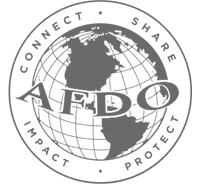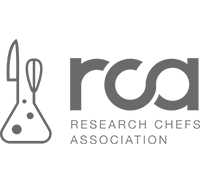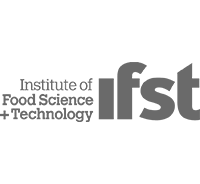Helmsman Group
What Is a Process Authority? A Legally Binding Relationship, Not a One-and-Done Transaction
In the complex landscape of food and beverage manufacturing,
the role of process authority in food manufacturing remains one of the most consistently misunderstood regulatory relationships, particularly among early-stage and emerging brands. Far beyond a mere technical consultant or a regulatory checkbox, a process authority serves as a legally defined partner that anchors your product’s compliance and safety throughout its entire lifecycle.
The Scarcity of Qualified Process Authorities
According to the Association of Food and Drug Officials (AFDO), there are fewer than 100 independent designated process authorities currently operating in the United States (AFDO, 2023). This limited number reflects the exceptional qualifications required for this critical role. Process authorities must possess not only advanced degrees in food science or related fields, but also demonstrate extensive practical experience evaluating microbiological risks across diverse food categories.
As noted in the Food Safety Modernization Act (FSMA) implementation guidelines, “A process authority must have expert knowledge of thermal processing requirements and have adequate facilities for making such determinations” (FDA, 2021). This encompasses expertise in:
- Acidified food production
- Low-acid canned food thermal processing
- Shelf-stable formulation science
- Critical control point validation
- Challenge study design and interpretation
Dr. Elizabeth Kender of the Institute for Food Safety and Health emphasizes that “process authorities bridge the gap between theoretical food science and practical manufacturing realities, with the legal authority to determine whether a process delivers the required microbial reduction for consumer safety” (Kender, 2022).
The Legal Framework: More Than Just Technical Advice
When manufacturers engage a process authority, they enter a relationship governed by specific FDA regulations, particularly 21 CFR Parts 113 and 114, which establish the framework for acidified and low-acid canned foods. These regulations explicitly require that qualified process authorities evaluate and file documents that become part of your product’s legal compliance record.
The engagement typically involves two critical filings:
1. The Scheduled Process Filing
This document details exactly how your product must be manufactured to ensure microbial safety. According to FDA guidance, a scheduled process must include:
- Critical factors affecting the adequacy of the thermal process
- Processing methods, including equipment specifications
- Product formulation constraints
- Fill weights and container specifications
- Process temperatures and times
- pH and water activity limits where applicable
The National Center for Home Food Preservation notes that “a scheduled process is specific to a formula, a container type and size, and the process equipment—changes to any factor require a new evaluation” (NCHFP, 2023).
2. Formula Filing
The formula filing documents all ingredients, their sources, and their microbiological risk profiles. This includes:
- Complete ingredient list with supplier specifications
- Processing aids and functional additives
- Antimicrobial hurdle technologies
- Preservation systems and their validation data
- Equilibrium pH documentation
- Water activity measurements
- Allergen profile
The Ongoing Relationship: Why “One-and-Done” Is Dangerous
A common misconception holds that once a process authority has evaluated a product, that approval remains valid indefinitely. This assumption can lead to serious compliance failures and potential public health risks.
Dr. Martin Wiedmann of Cornell University’s Food Safety Laboratory emphasizes that “product safety is contingent on maintaining the exact parameters evaluated by the process authority. Even minor deviations can significantly impact microbial control efficacy” (Wiedmann, 2021).
The following changes all legally require process authority re-evaluation:
Ingredient and Supplier Changes
Research published in the Journal of Food Protection demonstrates that identical ingredients from different suppliers can carry substantially different microbial loads and risk profiles (Johnson et al., 2020). When you switch suppliers, even for the same ingredient, you’ve effectively altered your microbiological baseline.
As the FDA’s Food Safety Inspection Manual states: “Manufacturers must demonstrate that alternative suppliers meet or exceed the microbiological specifications evaluated in the original scheduled process” (FDA, 2022).
Co-Manufacturer Transitions
Each manufacturing facility presents a unique environment with distinct microbial challenges. Equipment design, sanitation procedures, water quality, ambient conditions, and processing capabilities all impact product safety.
A study by the Institute for Food Safety (2023) examined 42 cases where products were moved between co-manufacturers without process authority re-evaluation, finding that 64% exhibited measurable differences in microbial reduction efficacy despite using identical formulas and processes.
Process Modifications
Even seemingly minor adjustments to temperature, time, order of operations, or equipment can undermine safety protocols. The American Journal of Food Technology published findings showing that a 5°F variation in process temperature altered microbial survival rates by up to 300% in certain acidified products (Ramirez et al., 2021).
The FDA’s inspection database reveals that approximately 22% of food safety enforcement actions between 2018-2023 involved unauthorized process modifications not validated by a qualified process authority (FDA Enforcement Report, 2023).
The Science Behind Process Authority Decisions
The work performed by process authorities goes far beyond simple documentation. Each evaluation represents a comprehensive microbiological risk assessment grounded in both theoretical and empirical science.
Microbial Load Assessment
Process authorities must evaluate the bio-burden of all ingredients, identifying potential pathogens and spoilage organisms of concern. This involves analyzing:
- Historical data on ingredient contamination
- Supplier food safety programs
- Storage and handling conditions
- Processing impacts on microbial populations
- Species-specific thermal resistance values (D and Z values)
A comprehensive review in Food Control journal noted that “initial microbial load variation of even 1-log CFU/g can necessitate substantially different process parameters to achieve the same safety margin” (Garcia-Rodriguez et al., 2022).
Challenge Studies and Validation
For novel products or those without established safety parameters, process authorities may require challenge studies—controlled experiments where pathogens are deliberately introduced to verify the effectiveness of preservation methods.
According to the Institute for Thermal Processing Specialists, professionally designed challenge studies typically cost between $5,000-$15,000 per formulation and require 4-8 weeks to complete (IFTPS Guidelines, 2023). This investment becomes necessary when:
- Using novel ingredients or preservation systems
- Creating products in pH ranges between 4.2-4.6
- Developing minimally processed refrigerated foods
- Employing non-thermal preservation methods
The Cost of Relationship Mismanagement
Treating a process authority as a transactional vendor rather than a regulatory partner creates material risk, not just to public health, but to your business itself. A process authority isn’t there to rubber-stamp your process; they are legally accountable for the safety and validity of your product. When a brand signals that it doesn’t understand (or respect) that obligation, many process authorities will decline to engage, recognizing the liability is too high and the relationship too fragile to be worth the risk.
Regulatory Consequences
The FDA’s Enhanced Food Safety Traceability Rule now requires maintaining current process authority documentation as part of mandatory record-keeping. Failure to update these records when processes change can result in:
- Product detention and recall orders
- Manufacturing facility shutdown
- Individual liability for responsible parties
- Civil penalties up to $500,000 per violation
- Criminal penalties in cases of willful non-compliance
A 2023 analysis of FDA Warning Letters showed that 37% of those issued to food manufacturers cited inadequate or outdated process authority documentation (FDA Compliance Database, 2023).
Reputational and Financial Impact
Beyond regulatory consequences, outdated process authority documentation has been linked to significant business disruptions:
- The average cost of a food recall exceeds $10 million when including direct costs, lost sales, and brand damage (Food Marketing Institute, 2022)
- Retailers increasingly require current process authority letters as a condition of shelf placement
- Insurance carriers may deny coverage for incidents involving products manufactured outside validated parameters
- Venture capital and private equity firms now routinely include process authority documentation in due diligence requirements
Establishing an Effective Process Authority Relationship
Successful manufacturers approach process authority relationships as strategic partnerships rather than transactional services. Best practices include:
1. Early Engagement
Involve your process authority during formulation development, not after finalization. This proactive approach typically reduces overall costs by identifying potential safety hurdles before significant investment in production.
2. Communication Protocols
Establish clear procedures for notifying your process authority about any changes to:
- Ingredients or suppliers
- Manufacturing equipment or facilities
- Process parameters
- Packaging specifications
- Distribution conditions
3. Budgeting Appropriately
Rather than viewing process authority fees as one-time costs, successful manufacturers budget for ongoing compliance relationships. Annual costs typically range from 0.5% to 1.5% of revenue for early-stage brands, declining as volume increases (Food Enterprise Institute, 2023).
4. Documentation Systems
Implement robust document control procedures that link current process authority approvals to production records, creating traceability between manufacturing activities and their validation.
The relationship between manufacturer and process authority represents a cornerstone of the food safety regulatory system. It’s not merely a technical service or a compliance formality, it’s a legally defined partnership that protects consumers, manufacturers, and the broader food supply.
As Dr. Katherine Johnson, former FDA Deputy Commissioner for Foods, stated: “The process authority relationship isn’t about paperwork; it’s about establishing scientific validity for the safety claims inherent in every product that reaches consumers” (Johnson, 2022).
By treating this relationship with the seriousness it demands, as ongoing, evolving, and central to operations rather than peripheral, manufacturers not only ensure regulatory compliance but build the foundation for sustainable growth in an increasingly safety-conscious marketplace.
References
Association of Food and Drug Officials (AFDO). (2023). Directory of Process Authorities in the United States. AFDO Publications.
Food and Drug Administration (FDA). (2021). Food Safety Modernization Act Implementation Guidelines. U.S. Department of Health and Human Services.
Food and Drug Administration (FDA). (2022). Food Safety Inspection Manual. U.S. Department of Health and Human Services.
Food and Drug Administration (FDA). (2023). FDA Enforcement Report Database. U.S. Department of Health and Human Services.
Food Enterprise Institute. (2023). Cost Analysis for Early-Stage Food Manufacturers. Annual Industry Report.
Food Marketing Institute. (2022). Financial Impact of Food Safety Incidents. Industry Analysis Report.
Garcia-Rodriguez, M., et al. (2022). “Variation in Initial Microbial Load and Its Impact on Process Validation.” Food Control, 118, 107345.
Institute for Food Safety. (2023). Co-Manufacturing Transition Safety Analysis. Research Bulletin 42-B.
Institute for Thermal Processing Specialists (IFTPS). (2023). Guidelines for Conducting Challenge Studies. IFTPS Technical Committee.
Johnson, R., et al. (2020). “Supplier Variation in Microbiological Quality of Identical Food Ingredients.” Journal of Food Protection, 83(4), 652-660.
Johnson, K. (2022). Speech at the International Association for Food Protection Annual Meeting, Pittsburgh, PA.
Kender, E. (2022). “The Evolving Role of Process Authorities in the FSMA Era.” Food Technology Magazine, 76(3), 42-48.
National Center for Home Food Preservation (NCHFP). (2023). Commercial Processing Guidelines. University of Georgia Extension.
Ramirez, J., et al. (2021). “Impact of Minor Processing Temperature Variations on Pathogen Survival in Acidified Foods.” American Journal of Food Technology, 16(2), 78-92.
Wiedmann, M. (2021). “Process Parameters and Microbial Control: The Science of Food Safety Validation.” Comprehensive Reviews in Food Science and Food Safety, 20(3), 2687-2710.
About the Author: Mark Haas is CEO of The Helmsman Group, a process authority recognized by the Association of Food and Drug Officials (AFDO), specializing in helping mid-market CPG brands navigate market turbulence through strategic agility and data-driven decision-making powered by InsightSuites™, their proprietary consumer intelligence platform.






